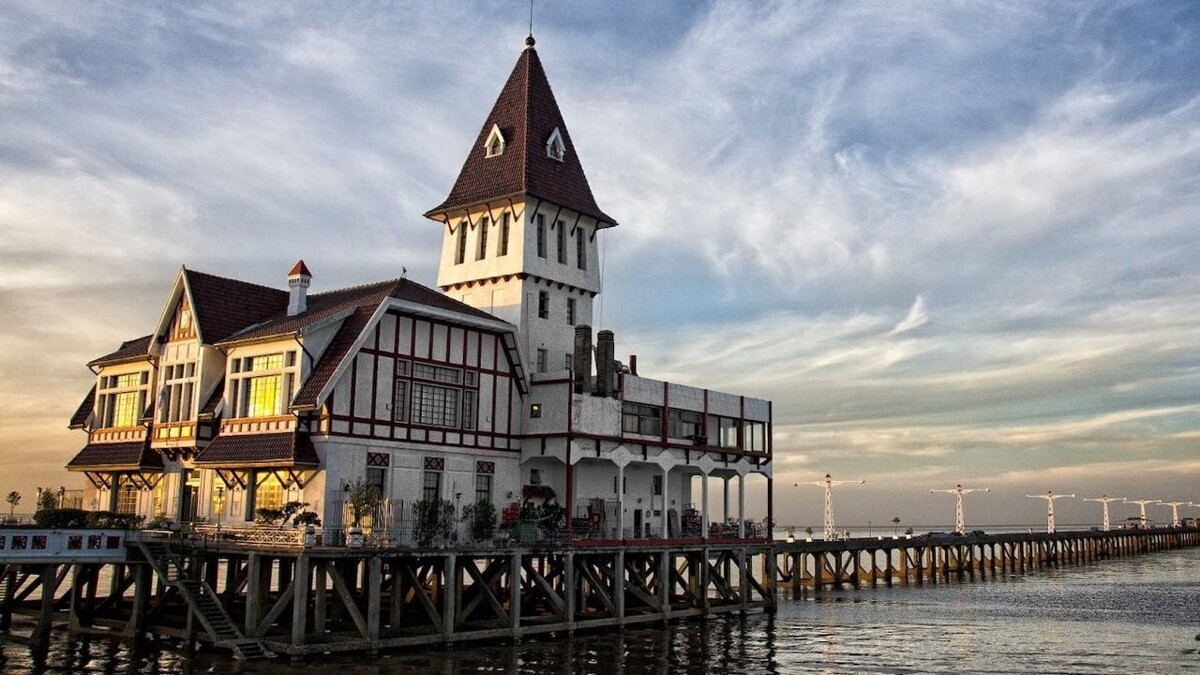
Suspended over the waters of the Río de la Plata, more than fifty meters from the coast, the building of the Fishermen's Club stands as an emblematic postcard of Buenos Aires.
With its Tudor-style architecture and its pier of over 500 meters, the construction not only summarizes more than a century of history but also embodies the obstinacy of a group of enthusiasts who, at the beginning of the 20th century, dreamed of their own refuge to practice their passion for fishing.
The club was founded in 1903 by a group of enthusiasts who built a modest shack on the so-called "Frenchmen's pier", a structure used in the previous century by French coal companies that unloaded their merchandise into railway wagons.
In 1905, that precarious headquarters, located at the height of the current extension of Ayacucho street, was destroyed by a southeasterly storm, forcing the members to embark on a long search for a definitive site.
After years of negotiations, in 1928 the then president Marcelo Torcuato de Alvear signed a decree granting the club a concession for a plot of land on Avenida Costanera Norte, along with permission to build a pier and a social building. The project was entrusted to engineer Julio Quartino, who conceived a work that combined functionality and architectural beauty.
Construction began in 1929, after the Ministry of Public Works approved the plans. Two years later, on October 28, 1930, the 512-meter-long reinforced concrete pier was inaugurated, with a wide platform extending over the river. The social building was inaugurated in 1937, in the presence of President Agustín P. Justo.
During the 1930s, the building began to consolidate itself as a symbol of Buenos Aires. In 1939, Reuters agency installed an international news receiving antenna on its tower. It was there that, according to the club's current vice president, Luis Spandonari, the end of World War II was first learned of in the country.
Its silhouette, outlined against the horizon, evokes a small European castle anchored in the middle of the river. On the outside, its pier offers one of the most privileged views of Buenos Aires: on one side, the urban profile and Jorge Newbery Aeropark; on the other, the open horizon of the Plata.
In 1991, Law 24.301 granted it a 99-year concession, guaranteeing the continuity of the club in its location. In 2001, the national government declared it a National Historic Monument, recognizing its architectural and heritage value.
Finally, in 2009, an agreement was reached to cede part of the land to expand Costanera Norte, in exchange for the construction of a parking lot for members and the extension of the pier.
Inside, a classic-style living room with a piano, a library, a historical museum, and an aquarium invite visitors to walk through a living piece of Buenos Aires history.
"The operator who was in the tower received the message and, without being able to communicate with the central office, came down to inform us by phone," recalls Spandonari.













